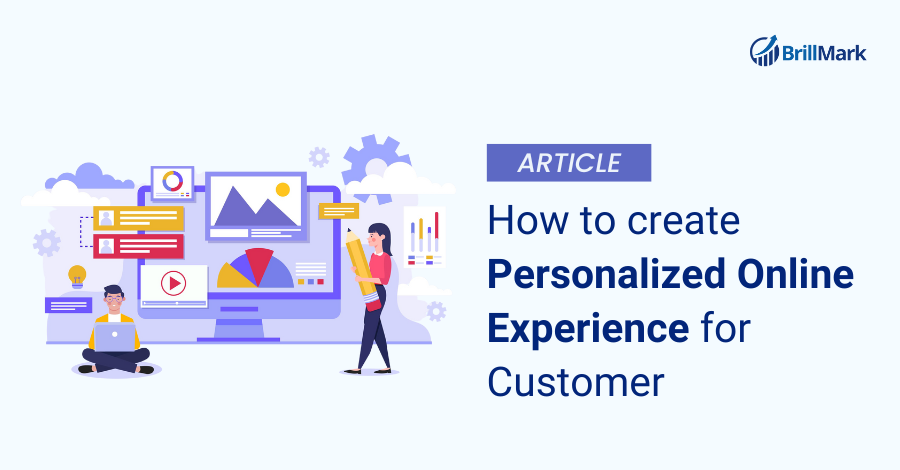Have you ever entered your favorite coffee shop to discover your coffee order already waiting for you? The barista customized your experience after recognizing your car in the parking lot and beginning your order before placing it.
This is how the personalization experiences of your website should appear to your visitors.
Let’s be honest; personalization is standard etiquette. Period.
The current retail climate is challenging in nearly every element due to price competition from discounters, market disruption from internet competitors, and improved pricing transparency for consumers.
Traditional retail differentiation strategies, such as a distinct variety or innovative pricing and promotions, are not as effective as they once were since competitors easily copy them.
However, a curated distinction is still feasible through personalized tactics in which businesses offer a one-of-a-kind client experience. For instance, using first names alone is now considered the absolute minimum.
Hyper-personalization is the key.
The best way to apply personalization is to understand the customer by collecting relevant data. Customers anticipate that brands will present material or options based on their preferences and actions.
We at Brillmark ensure you have the correct data to differentiate your business and achieve a sustained competitive edge. We implement flawless A/B testing to help you open the door to personalization.
Customers have increasing needs and higher expectations. As they face the same uncertain environment, they seek answers, goods, and unique solutions to everyday issues.
This article will discuss some of the most crucial report results regarding individualized experiences.
What exactly is website personalization?
According to BCG, businesses with exceptional personalization strategies enjoy enhanced marketing effectiveness, increased digital sales, and long-lasting client connections. In addition, their growth rates increase by between 6 and 10 percent.
Website personalization experience is a tactic used by marketers to create a one-of-a-kind consumer experience with personalized suggestions, dynamic content, and special offers.
It is set according to a visitor’s website activity, demographic, and perceived interests.
The primary objective of website personalization is to improve the user experience by anticipating the consumers’ wants and aspirations.
Personalization may increase traffic, client retention, and sales; nonetheless, only 13% of marketers are pleased with their efforts.
If your site is not enjoying these growth figures, it may be time to consider the advantages of website personalization.
Benefits of Website Personalization
When you appreciate your consumers, they will take note. By providing customers with appropriate product suggestions, they will express their gratitude by spending more time on your site and clicking on CTAs.
Relevant Product Recommendations
Customers benefit the most from personalized product recommendations.
You can offer accurate and timely suggestions based on user data while retargeting advertisements and predicting future purchases.
Using ad campaign interaction data, you can populate user homepage elements.
Customer loyalty and understanding
Understanding your clients will help improve their experience. You may work with your IT staff to customize your website for each persona.
Starting with brand identities instead of individual clients reduces data combinations. Instead of creating an experience for 15,000 distinct consumers based on their addresses and purchases, establish five or six buyer personas using broader characteristics like area and spending in the previous six months.
Did you know?
74% of Generation Z are interested in customized items, compared to 67% of Millennials, 61% of Gen Xers, and 57% of Baby Boomers.
Brand confirmation
The above principles are connected to two goals: increase income and establish brand affirmation.
When you understand your online shoppers, visitors, prospects, and decision-makers, you can provide them with what they want and thus, create more revenue.
Extended time-on-site
We pay attention for a mere 8 seconds to anything that interests us. From the moment we become captivated, our attentiveness is fleeting.
Additional personalization may lengthen their time on your website by reflecting on your customers’ patterns and purchase history.
Every marketer measures time spent on the page, indicating the level of customer engagement. Although visitors’ time on your site is crucial, it’s a lot more helpful when they convert on a call-to-action or landing page.
High-converting landing pages and CTAs
Website personalization boosts conversion rates on landing pages and CTAs. BCG discovered that tailored experiences enhance revenue by at least 6%. This isn’t accidental growth.
Personalization is high-effort, focused, actionable labor with high ROI expectations. If done it correctly, this method should work to increase revenue and enhance online experiences for your customers.
Did you know?
GetFeedback’s 2022 State of CX Report concluded that acting on customer insights is a top difficulty; this is both predictable and thus far quite alarming.
How to Personalize your website
We’ve learned the advantages and difficulties of customizing your website, but how can you begin?
In addition to employing the appropriate technologies, there are several customization elements that can be measured on your website to provide visitors with a unique experience.
These tracking parameters maintain your visitor’s interest in what your organization offers while also urging them to purchase the products they require most.
This starts with creating buyer personas.
Buyer Personas
What are buyer personas, and how can your company utilize them to tailor its website? Buyer personas are data-driven, semi-fictional representations of your ideal consumers.
These representations allow us to provide accurate yet simple-to-apply snapshots of our broad audience across marketing campaigns, product launches, and websites.
By combining buyer personas into your website customization efforts, you may tailor distinct homepage versions to customers, without generating a unique homepage for each website visitor.
Did you know?
Sixty percent of millennials stated they would not hesitate to share personal information to obtain personalized offers and messages.
UTM parameters.
UTM parameters assist in defining and segmenting traffic according to referral sources, campaign name, and content type.
These three characteristics can be used alone or in combination to customize landing pages.
Geolocation
Geolocation monitoring is not as intimidating as it initially appears. Many individuals confuse geolocation tracking for a website that follows their every step.
This is the furthest thing from the truth!
The cell towers and WiFi nodes nearest to a site visitor are used to determine their approximate position for geolocation monitoring.
This assists the website in recommending local stores, for instance.
This tracking is also beneficial in non-physical circumstances. For instance, your organization may target Sasha, your buyer persona, in Austin, TX, by utilizing language and imagery specific to that place.
Device type
The gadget users use to access your website might reveal a great deal about them. Whether they are using an iOS or Android device, mobile phone, tablet, or desktop computer, you may make a reasonable assumption about the sort of buyer they are.
According to the research, four out of five Americans buy online, and more than half use their mobile phones to make purchases. Given this, it may be prudent to provide mobile visitors with more buy suggestions than desktop visitors.
Duration on Page
We know that time spent on a page is a crucial indicator for any website administrator. This number helps us determine the overall performance of our website.
In the first quarter of 2019, the average time on site for desktop, smartphone, and tablet devices was five minutes, four minutes, and five minutes, respectively, according to Statista.
The time a visitor spends on our website is influenced by content quality, page design, and page load speed. When you combine this information with the device type data listed above, you may determine which devices affect page dwell time and why.
A/B testing Data & Implementation On the Website
After collecting information, companies make the mistake of randomly implementing it because it worked for their competitors.
Consider this a red flag.
Enter A/B testing.
To avoid this Red flag, the best thing to do is A/B test the data before implementing it on your website. It helps to understand while also making you stand out among your competitors.
Once this information has been gathered and split into unique consumer profiles, with the help of our expert developers, companies may begin implementing their plan across all channels, platforms, and websites after A/B testing the data collected.
Common marketing channels include email, social media, the web, and third-party advertisements.
We at Brillmark ensure that after ab test development all the information & implementing them on your website, your present and future consumers are appropriately engaged and are catered to during the digital customer’s browsing, shopping cart, and purchase stages experience.
You might give incentives or recommendations at the beginning of your customer’s journey to hone their hunger for the following things you offer.
For example, ‘customers who saw comparable products also viewed…’ displays products that will most likely pique their interest based on their previous product searches.
As with any other procedure, personalized marketing techniques must be continuously evaluated and optimized to achieve 100 percent efficiency.
The ideal strategy is to let campaigns run for a few weeks before analyzing the outcomes.
Thus, your team will get a realistic image of actual progress over time instead of a brief snapshot of your personalization strategy’s development.
Get in touch with us and let our expert developers, with years of experience, help you with A/B testing the data & implementation flawlessly on your website.
Examples of Personalized Customer Experience
Spotify
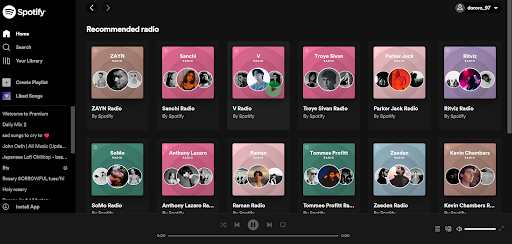
The music recommendations on Spotify are intended to keep users engaged with the site and continue consuming the content, but this is not the only way it employs hyper-personalization.
We say that the most successful use of technology by the streaming app is the allowed comprehensive account customization.
Spotify encourages users to construct their playlists, allowing them to develop a whole music collection on their accounts effectively.
Why is this significant?
The possibility of abandoning Spotify and recreating those playlists on another platform is unappealing (or losing them altogether) because the user has spent excessive time on Spotify.
As a result, the user is stuck into paying for a premium subscription — and very gladly so.
Google News
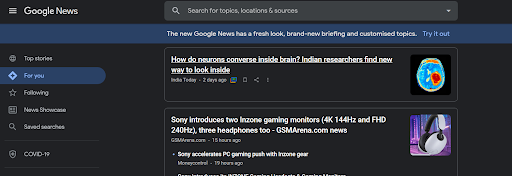
This Google function analyzes a user’s Google browsing history and suggests current, relevant news stories in the “For you” area.
Google compiles a variety of possibilities, including websites visited in the past.
Personalization is not restricted to a single objective. You may show relevant information or items using the data you access.
Airbnb
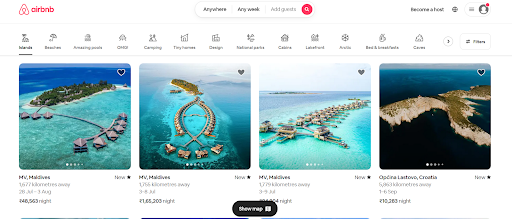
There are few things more intimate than a vacation. Airbnb simplifies trip planning by offering local activities based on your location.
As the globe adapts to a new norm, Airbnb personalizes these suggestions depending on how long it may take you to drive from your current location to your holiday destination.
Additionally, the Airbnb app maintains track of your stored searches. If you plan a trip to Jamaica but postpone it, you do not need to spend hours searching for the ideal cottage. Airbnb stores it until you’re ready to go again.
Amazon
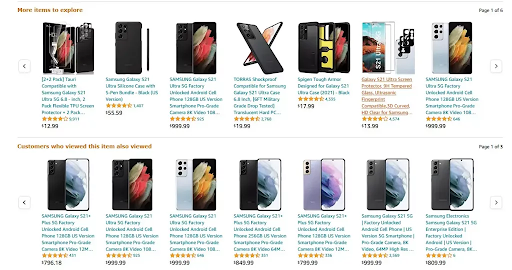
One of the most well-known examples of personalization is also one of the most successful. Amazon’s product suggestion engine allegedly provided 30% of the e-commerce giant’s income in 2015.
In theory, with five years of more data pouring through its algorithms, its recommendations should be even more accurate.
Several product recommendation engines claim to provide a comparable experience for B2B and B2C retailers.
Remember that consumers frequently consider product suggestions one of the most sought types of personalization.
Conclusion
It seems obvious that businesses would be keen to launch personalization efforts, given the potential benefits of customization. Personalization enables you to transform your website from average to unique for each visitor.
Using behavior tracking, location data, previous browning history, and a CMS that can handle it all, you can provide your audience with a curated online experience every time.
To develop a customization program and ensure its successful implementation, retailers should form a cross-functional team to test and learn from trials.
As it expands, analytics and technology professionals will be significantly indispensable to the program.
Finding the right external partner like Brillmark to help develop the personalization program is also significant, as it will accelerate the retailer’s progress toward the desired outcomes: a more personalized experience, increased customer loyalty, pronounced differentiation, an increase in wallet share, and substantially improved top and bottom lines.
Contact us to find out more











